Bile Acids---Solve the problem of Mycotoxins to Aquatic Animals
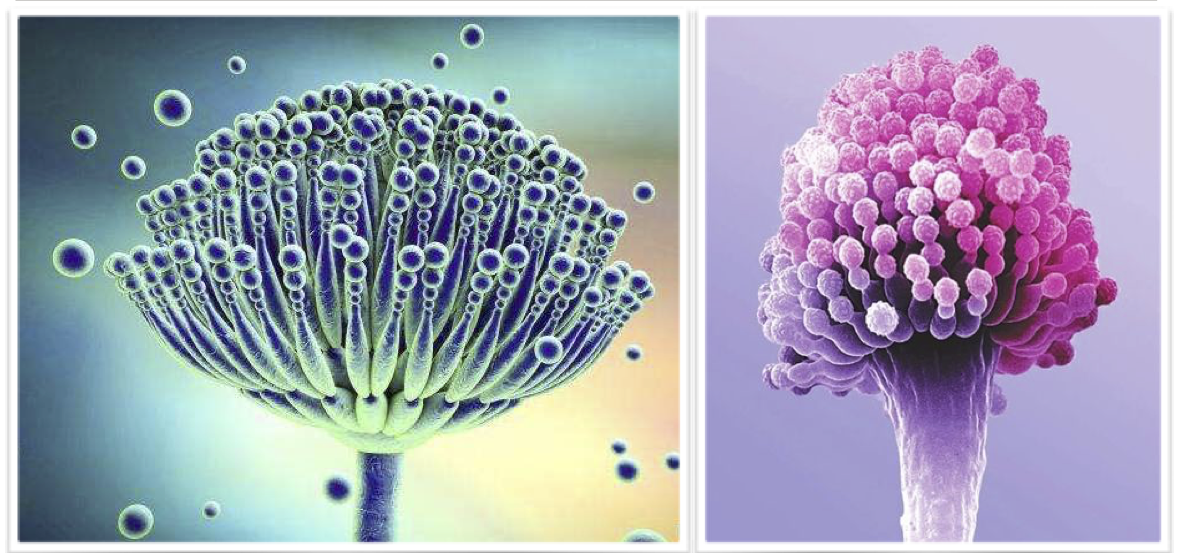
Mold is a kind of creature that is very tenacious in vitality and fertility, and is ubiquitous in our lives and production. Mycotoxins produced by mold, which have acute or chronic toxicity to humans and aquatic animals, can damage the liver, kidney, nerve tissue, hematopoietic tissue and skin tissue of the body.
Summer is the fastest growing period for farmed fish, but the high temperature and high humidity in summer is also the most climatic condition for mold growth. Mycotoxins affect the growth and health of aquatic animals. Therefore, we should increase our understanding of mycotoxins in aquaculture and reduce the harm of mycotoxins to aquaculture.
First, the source of mycotoxins
1. Improper storage or long time storage is one of the important sources of mycotoxin. Aquaculture is generally carried out in a high-temperature and high-humidity environment. Under such condition, nutrients such as fat contained in the feed are highly susceptible to mold to produce mycotoxins. Usually, although the feed seems good without becoming moldy, in fact, mycotoxins are forming.
2. Feed ingredients are also an important factor to breed mycotoxins. Because of the relatively stable production season, corn, bran and many raw materials in the feed ingredients need to be stored for a long time, but some improperly stored feed materials are prone to produce mycotoxins.
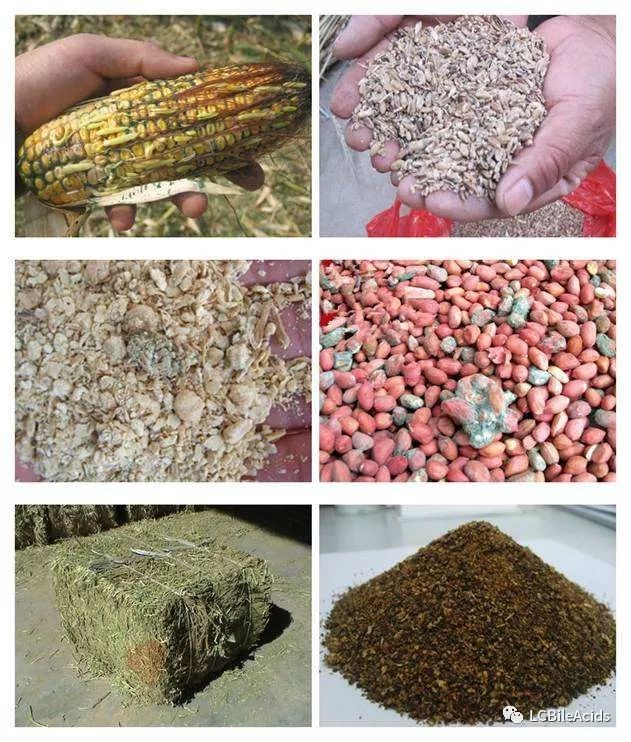
Although high temperatures during feed processing can kill some of the mycotoxins, most of the toxins still exist and can cause damage to aquaculture animals during use.
3. Some Chinese herbal medicines like scutellaria and dried tangerine peel that have been stored for a long time are also prone to mycotoxins. They are prone to mold and produce toxins under improper storage conditions. In addition, if the packed traditional Chinese medicine products cannot be used up in time after opening, they are prone to mold and produce toxins.
4. The lack of attention to details in the farming also makes the chance for mold production. If the packed feed cannot be used up in time after opening without being tightened in time, or some moldy feeds or drugs are not allowed to be thrown or the mixing of feed are not timely fed to animals, they are all possible reasons for the growth of mycotoxins.
Second, the hazards of mycotoxins
Aflatoxin in mycotoxins is 100 times more toxic than arsenic. What kind of harms do mycotoxins cause to aquaculture? See details as follows:
1. Hazards to shrimp: direct damaging the liver and pancreas, resulting in the loss of immune function of the shrimp; then leading to EMS, slow growth, poor body color, stress, soft shell, etc.; in addition, causing digestive tract damage of shrimp, resulting in the empty jejunum and stomach, red jejunum and stomach, and further WFS.
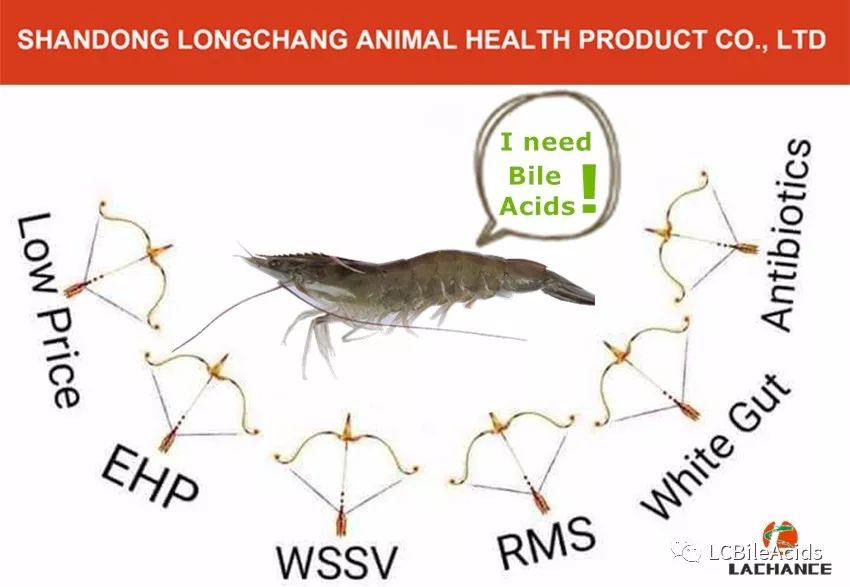
2. Hazards to fish: causing liver to become lighter and brittle, causing gallbladder to become swollen; the fish is characterized by poor body color, slow growth, easy for disease.
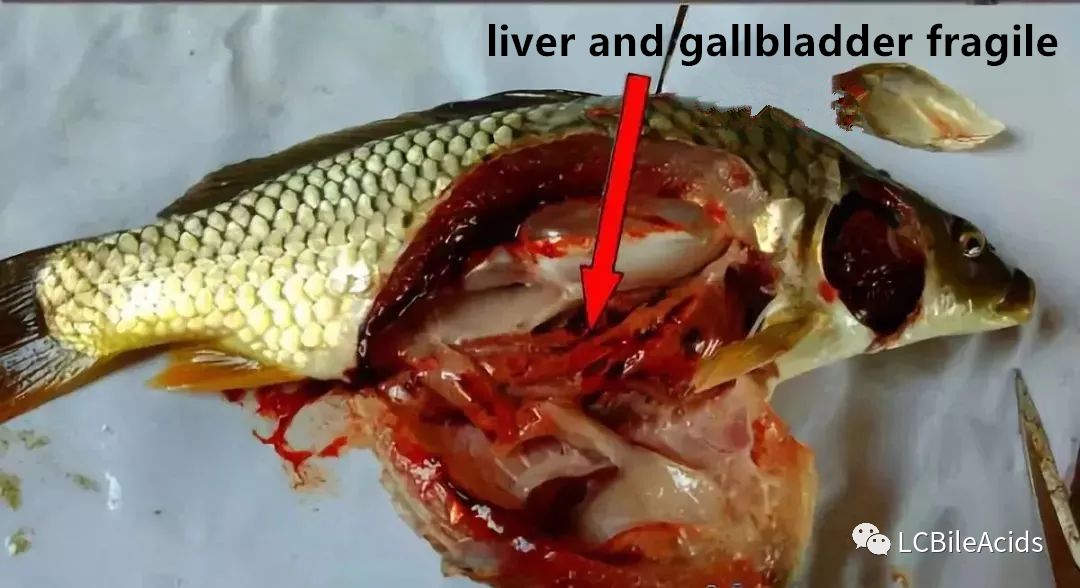
The damage of mycotoxins to aquatic animals is mostly implicit. The damage caused by accumulation to a certain extent is irreversible; especially the damage of mycotoxin to the immune system of aquatic animals is serious, which makes it easy to get other diseases for farmed animals, so the damage caused by this disease often comes quickly and largely.
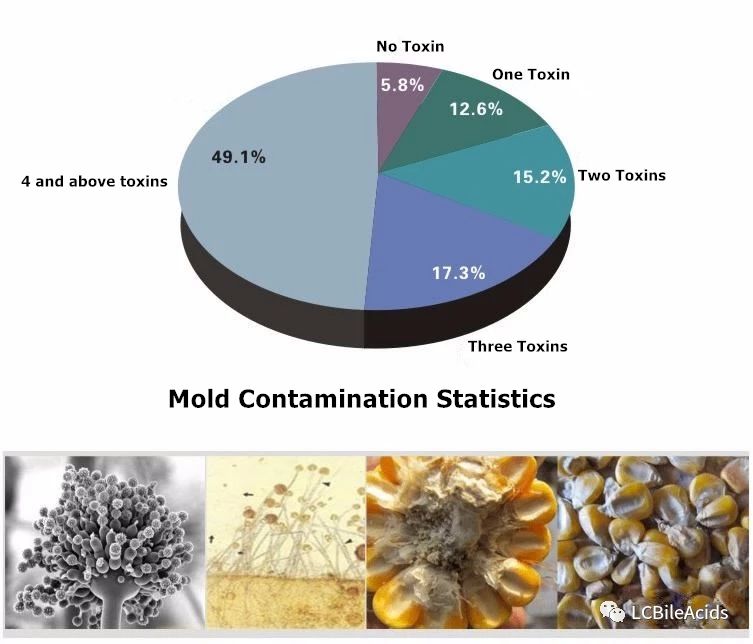
Third, the prevention and treatment of mycotoxins
Although the hazards of mycotoxins are unavoidable in aquaculture, we can still minimize their damages through some measures.
Measure 1:
Protect the liver. Strengthening the liver (hepatopancreas) functions of aquatic animals and improving the detoxification ability of the liver are the most fundamental measure to deal with the damage of mycotoxins. The liver is the detoxification center and immune control center of aquatic animals, and the liver is also the most important organ to be damaged by mycotoxins into the body, therefore, improving the liver's detoxification function is the most important measure to reduce the risk of mycotoxins.
Measure 2:
Protect the intestines. Enhance intestinal functions, repair intestinal mucosa, excrete the absorbed mycotoxins, reduce the accumulation of mycotoxins in the body and reduce the damage to the intestinal tract. It is also of great significance for reducing the harm of mycotoxins.
Measure 3:
Pay attention to the details in the farming process like un-excessive storage of feed, timely used-up bagged medicines or feeds, resolutely no use of moldy bait, timely cleaning of culture and mixing tools.
Regular use of liver-protecting bile acid and multi-vitamins to mix with feed can enhance the detoxification functions of the liver, and decompose the mycotoxin absorbed into the body in time; at the same time, together with intestinal health medicine, can strengthen the intestinal detoxification of mycotoxins to reduce the adsorption of mycotoxins. It is recommended that the above-mentioned liver protection and intestine protection program be used for at least three to five days every half month in the high temperature season.
The prevention of mycotoxins is a delicate and long-term process. Don't wait to realize the hazards of mycotoxins until the body accumulates to a considerable extent and cause serious damage. Timely detoxification and minimizing the amount of mycotoxins in the body are the fundamental way to reduce the risk of mycotoxins.




